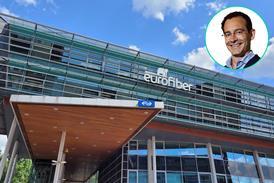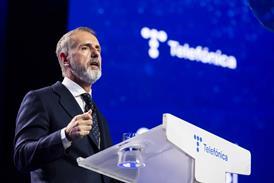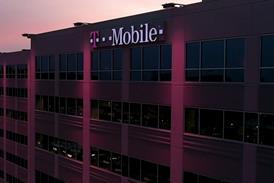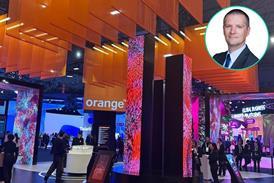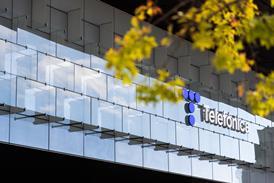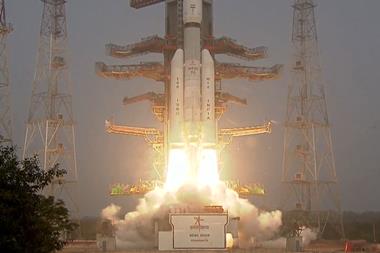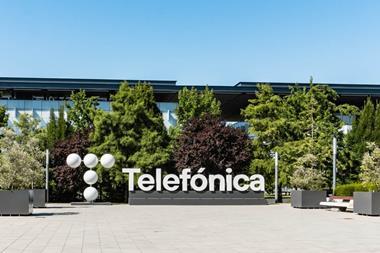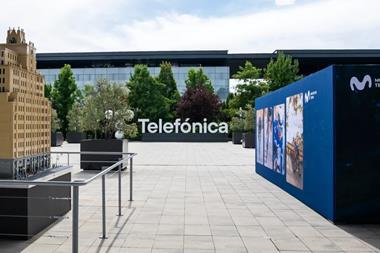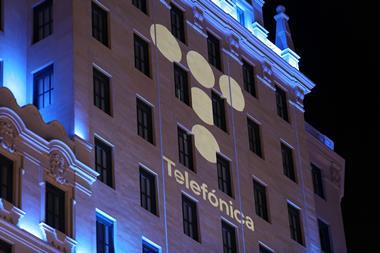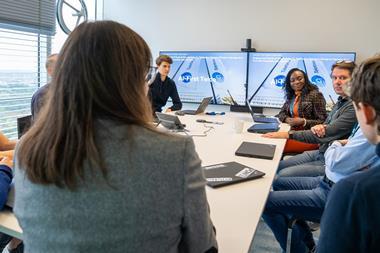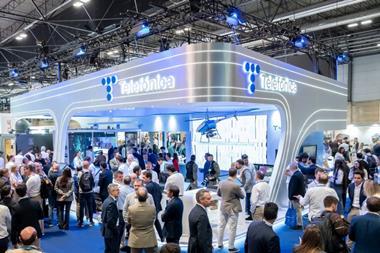- True benefits of Open RAN will come from sustainable innovation rather than short-term savings, according to senior Ciena figures.
- Unlocking the full potential of disaggregation may prove to be a long game, but investment is needed now for operators to be positioned to leverage opportunities.
- Underlying transport infrastructure able to span network generations offers a bridge to speed up transition to open technology deployment.
- Transformation will underpin telco breakthrough into the metaverse with operators’ current plans positioning them to influence deep change.

The accessibility and flexibility injected into access networks through adoption of Open RAN provides a substantial opportunity to boost competition within networks by breaking down monolithic technology environments.

This competitive injection will have a range of knock-on benefits in a disaggregated network, including potential for both near‑ and long‑term efficiencies, as barriers break down and more vendors can enter the fray. However, Joe Marsella, Ciena’s Vice‑President for its Metro & Edge Portfolio, asserts that operators should consider that the overriding benefit of the new access technology is the opportunity to foster greater innovation.
This focus on the complete transformational benefits will be key, Joe believes, to ensure that operators can keep their eyes on the long‑term prize of enhanced, more profitable infrastructure, even if some of the much‑hyped early opportunities for commoditisation are accompanied by short‑term challenges on integration, management and support.
“ With Open RAN, it will be important not to underestimate the operating expenditure that it takes to run what is essentially a more complicated network, with more vendors, and more interfaces. But just because Open RAN opex may not initially prove a big advantage, it doesn’t mean the opportunities from innovation are not worthwhile — especially the potential for greater automation, which will be essential in the long run. ”
Joe Marsella.
Arturo Sotillo, Managing Director Iberia Business Hub and Telefónica Global Account Lead at Ciena, agrees that it will be vital for operators to follow through with innovation and keep faith in the opportunity that this can bring.

For Open RAN, this opportunity for operators will include an ability to continually bring new capabilities to networks and the chance to demonstrate leadership and differentiation in the market while working with finite resources. Arturo says operators need to ask themselves, “will investment in disaggregation help squeeze as much leverage and bandwidth as possible out of existing spectrum or fibre?”, adding, “those are the type of goals operators should be striving for rather than lower the initial cost of acquisition”.
Further value can be derived from today’s commitment to network innovation through subsequent waves of digital transformation that rely on this modern infrastructure, as Arturo discusses below in relation to the metaverse.
“ Open RAN is not only about initial cost or setup cost for the solution. It’s about innovation and leadership in the network and how you are able to deploy new functionalities in the 5G network in the fastest way for the medium and longer term — in the most efficient way. But the investment is needed now if you want to leverage the technology in the future. ”
Arturo Sotillo.
Embracing Open RAN requires perspective and collaboration
Ciena is approaching Open RAN from a different angle compared to many in the sector, providing a dispassionate perspective of the challenges and opportunities surrounding the technology.
While best known as an optical vendor, Ciena has been developing Ethernet‑based solutions since the mid‑2000s, with wholesale mobility and backhaul among the key use cases it has embraced, securing success first in North America, and more recently breaking through with contracts in Europe. As its own portfolio drew it deeper into mobile xHaul (converging fronthaul, midhaul and backhaul) over the past five years, Joe says it became evident that the anticipated disaggregation would still demand merchant silicon-based hardware, but with kit that is more flexible and able to address multiple demands.
“ If you believe in a split-RAN architecture where the network is being decomposed into geographically distinct RUs, DUs and CUs [radio, distributed and centralised units], then you will want to leverage Open RAN principles as much as possible. ”
Joe Marsella
This new disaggregated architecture will inevitably bring complexity and, as Joe notes, “any disaggregated solution is always harder to do in real life”. He stresses that anticipating this complexity will be the most effective way to counter it, and he considers that collaboration on individual elements will be essential.
Backing this belief, the vendor has participated in all of the O‑RAN Alliance’s Global Plugfests to date and taken steps to foster partnerships with other key vendors in the emerging sphere, such as Samsung. Strong operator relationships are also deemed vital for Ciena.
Joe suggests that the level of complexity involved with Open RAN may mean that the technology does not reach its full potential until the arrival of 6G — a view that is gaining traction across the industry as the challenge of implementation and integration becomes clearer. Nevertheless, there are early gains to be made, and the time for that investment in collaboration and innovation is now.
Ciena’s experience in planning for disaggregation
In recent years, as the market has evolved towards more converged IP/optical infrastructure, Ciena has pursued its own internal evolution, moving beyond pure Ethernet‑based solutions towards a complete Ethernet- and IP-based solution set. This was considered the most effective way to capture opportunities in an evolving market being driven by the coming of 5G, with the anticipated investment inflection point between 4G/LTE and 5G identified as a clear opportunity to play a key role in new 5G rollouts and the virtualisation of mobile architectures.
The decision was driven by recognition of the changing nature of networks and the likely openings for innovation across the market — opportunities that would only be accessible when the necessary groundwork was in place.
“ We made a pretty significant decision to almost start from scratch and build for a next-generation infrastructure. That was a tough decision at the time, but, as we sit here today, I think that decision to say ‘let’s start from a next-generation, disaggregated, containerbased IP operating system and really lay the proper groundwork for the future’ has been the right one. ”
Joe Marsella
Arturo highlighted Ciena’s credentials in providing integration that can enable interconnection across multi‑vendor solutions. “We have been committed to openness in optical for nearly 20 years, which is now true of the disaggregation space and with the Open RAN space”, he says.
As well as evolving its portfolio for next‑generation connectivity, Ciena is intent on changing perceptions of its business, particularly in the European market. According to Joe, the vendor is gaining traction in Europe as a player in the xHaul market, as operators are making decisions and rolling out new 5G-centric transport architectures.
Parlaying complexity to bag early enterprise ecosystem wins
System integration is a key facet of managing the complexity surrounding Open RAN development, and Joe notes that relationships are fluid and evolving in this area.
The emerging SI ecosystem for disaggregated architecture features traditional players as well as vendors across radio, server, OSS and other components. Ciena itself already plays varying roles in the integration space with partners of different sizes, particularly in the enterprise private network space, and with shared public spectrum.
“ In an enterprise situation, you don’t want to spend two years trying to integrate all these components for the first time. In the enterprise space, it needs to be fast. It needs to be repeatable. That’s why we work with partners, create this ecosystem, and really make it fast and repeatable from a known set of building blocks. ”
Joe Marsella
The vendor is also collaborating, for instance, on provision of end‑to‑end 5G solutions that combine its xHaul portfolio with Samsung’s core and virtualised RAN solutions. The partnership envisages opportunities around a joint portfolio with demand for speed and efficiency in business settings fuelling demand for ‘in‑a‑box’ solutions.
Ciena expects continuing development of this enterprise opportunity to encompass go-to-market partnership with service providers, helping the industry partner ecosystem to deliver tangible benefits from investment in Open RAN development to an operator’s bottom line.
Joe particularly tags the opening up of shared public network spectrum (such as CBRS) as a driver of growth in enterprise demand for Open RAN‑based private networks.
“ The private enterprise space is actually more primed for Open RAN-type technologies than perhaps some of the macro environments. I think, initially, we’ll see a lot more Open RAN adoption in that private and CBRS space. ”
Joe Marsella.
Existing technology can provide a bridge to future networks
Joe considers that more immediately available solutions capable of traversing different network generations will have a key role in balancing the needs for patience in advancing disaggregated network development and the reaping of measurable returns. He cites the direction of fronthaul traffic management as an example.
“ Given the proliferation of radios, and the different types of traffic in many areas, the ability for a single device to handle multiple mobility functions and more without impacting super latency-sensitive fronthaul requirements is a key advantage. ”
Joe Marsella.
The emerging enhanced Common Public Radio Interface (eCPRI) protocol is managing the surging demand for high-speed connectivity between remote radio units and distributed units by enhancing capabilities to help handle traffic and ease pressure on base stations. It is well suited to both supporting 4G network connectivity and facilitating the shift towards 5G and Open RAN.
Programmable technology that can transport both traditional CPRI as well as the newer generation eCPRI in a per-port configurable way is also expected to bridge the gap, with Ciena having demonstrated its own flexible approach to managing fronthaul traffic at the Telefónica‑hosted O‑RAN Alliance Global Plugfest.
Ciena’s focus and investment into the mobility sector has entailed the development of a greater understanding of the elements of xHaul as it laid the groundwork for a more sophisticated transport architecture capable of supporting multiple technology types and truly opening up the RAN.
Arturo now sees Ciena’s potential role in managing xHaul as a key area where it can differentiate itself and support operators, through removing the pain points that accompany increasing granularity. “As Open RAN grows, traditional RAN will still be there, and the two will have to co‑exist”, he notes, “so solutions will need to work in both environments and provide critical elements, such as warranties, quality of service, flexibility, synchronisation, and clock transmission”.
“ Any service provider will have to deploy xHaul, leveraging Open RAN in some areas, traditional RAN in others — but the xHaul should be common. In developing the Open RAN ecosystem, the industry has to ask ‘can we be more effective in xHaul?’. How we can improve automation within that context? ”
Arturo Sotillo.
The time to prepare for the metaverse is now
Taking a long‑range view on the value of innovation may also be critical to capturing the yet‑to‑defined opportunities around the metaverse and other emerging applications and technologies, notes Arturo. Over the next five to ten years, a network edge that is more intelligent, and closer to the user, will be paramount.
This view is reflected at Telefónica, where Executive Chairman José María Álvarez‑Pallete has highlighted how important it will be for operators to not just observe or facilitate the advent of new and potentially revolutionary technologies such as the metaverse, but to actively participate in shaping them.
Predicting that the impact of the metaverse will entail “an even deeper change than the arrival of the internet”, the Telefónica chief has placed management of operators’ role in the evolution of this new digital era at the heart of his priorities as the current Chair of the GSMA industry body.
This lofty ambition will need to be backed by equally bold network transformation to enable it, according to Arturo, which will go beyond migration of services to the network edge.
“ The transformation and the evolution of the network to support interactions in the metaverse is going to be huge. The metaverse requires bandwidth and latency that will involve not just pushing the edge closer to the user, but transmitting everything faster. That will demand the consolidation of optical and IP intelligence onto a single platform for a smarter edge, closer to the users. ”
Arturo Sotillo.
Open RAN experience will drive network slicing opportunity
Network slicing is another area where patience may be needed before its true potential as a profitable revenue‑generating technology is crystalised.
While the capabilities for slicing exist in the network today, integration is again the likely challenge that needs overcoming to unlock its potential. As with Open RAN, slicing would benefit even further from hardware capable of hard-separating the traffic into distinct flows, based on the slice being created.
While commercially viable use cases are still in their infancy, more and more are being developed and entering into various phases of testing and proof of concept. In this environment, Joe stresses the need for forward thinking and planning to ensure that the foundations for delivery are in place. “It’s not a single vendor end-to-end solution”, he says; “you have to integrate RAN slicing with transport slicing, with core slicing, and then be able to orchestrate and manage the end-to-end slice.”
“ You may not know exactly what you’re going to do in the long run with slicing, but you need to build infrastructure right now with the capabilities that would support it in the future. ”
Joe Marsella.
Telefónica Deutschland is already working with Ciena’s network software division Blue Planet on bringing open orchestration to the transport network and creating a disaggregated multi-vendor optical architecture, which the operating business has described as a critical element of its move towards network automation.
| Contact | Ciena is a networking systems, services and software company. |
|---|---|
| ciena.com/contact-us/sales |
It provides solutions that help its customers create the Adaptive Network™ in response to the constantly changing demands of their users. By delivering best-in-class networking technology through high-touch consultative relationships, Ciena builds the world’s most agile networks with automation, openness and scale. |








